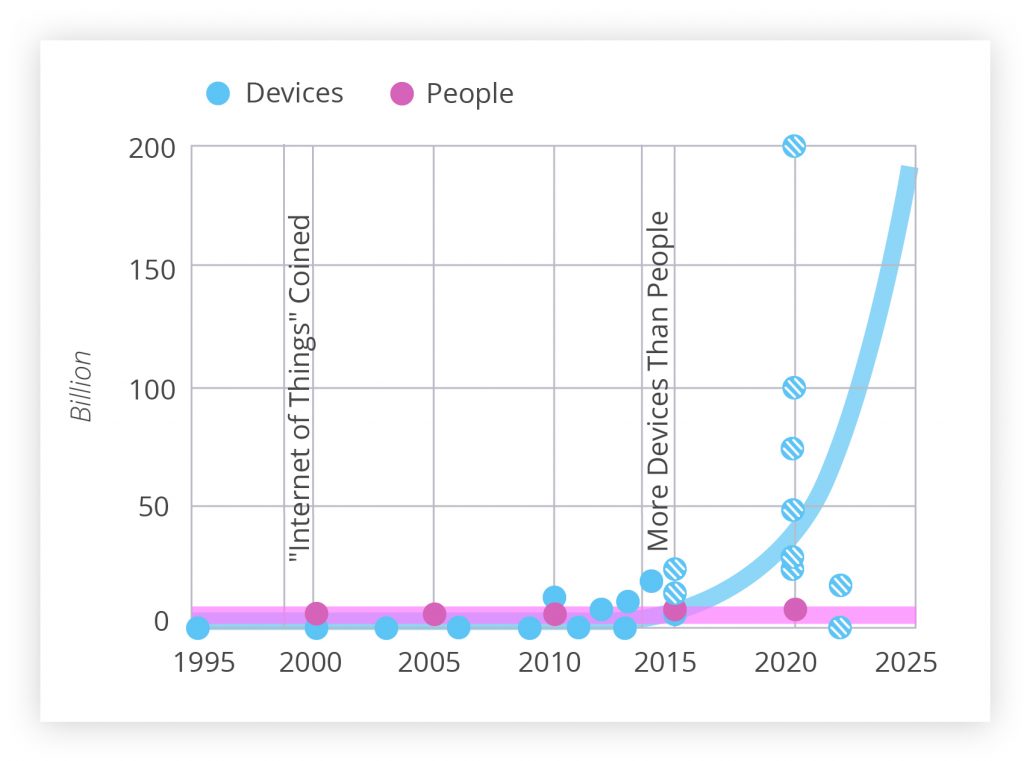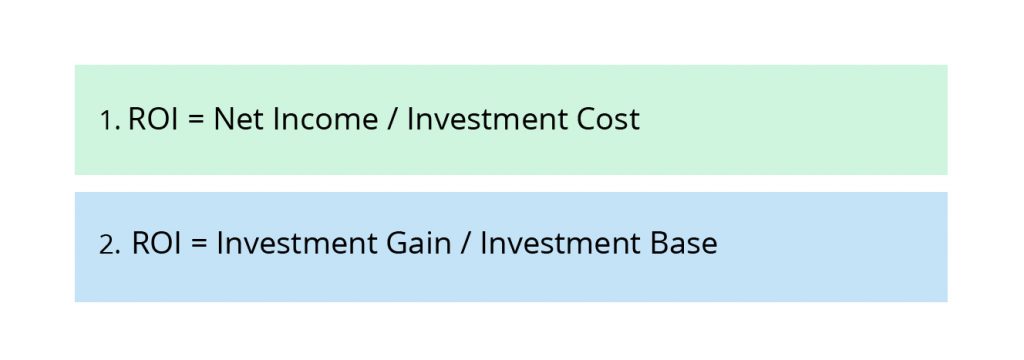Some Clues On How To Calculate ROI For IoT Investments

Internet of Things (IoT) is the subject of much hype these days. IoT connects more and more devices across the globe. IoT products resemble a sweeping avalanche permeating different areas of life. The world of connectable devices is growing rapidly. The attractiveness of IoT investments continues to lure more and more investors.
Perhaps you are now in the decision-making stage, and you are considering investing in building an IoT solution, but you aren’t sure how to calculate ROI (return on investment). We are here to help you out! Be equipped with the necessary skills to calculate return on investment.
How big is the IoT market?
The sheer scope of the IoT market is simply staggering. People from different walks of life continue buying IoT devices exponentially. This technological fad seems to be unstoppable and irresistible. Estimates indicate that there were $18 billion in sales of connectable devices in 2009. That number skyrocketed to $1.1 trillion. By 2019 there’s an expectation of $1.71 trillion in spending. On top of that, the best forecasts now estimate that by 2020 there will be as many as 50 billion smart devices.

Source: Author’s calculations based on data from ABI Research (2013), Business Insider (2013), Cisco (2013, 2015), EMC (2014), Ericsson (2011), Forbes (2013), Gartner (2013), Hammersmith Group (2010), Intel (2014), Internet Census (2012), Internet World Stats (multiple), Machina Research (2013), Navigant Research (2013).
IoT is a hot topic for different investments. For example, customers are jumping after Amazon Echo Voice Assistant/Speaker. It can function in a two-fold manner:
- Either as a central hub for connecting all connectable devices in a smart home as it is powered by artificial intelligence (AI).
- Or as a voice-powered assistant (i.e., you can ask this smart thingy to tell you whether the traffic is heavy today).

Without question, this smart speaker is a great way to leverage the benefits of your brand. If you are up for having a new skill developed for it, we are here to help.
What stops you from investing in IoT?

No matter how big the business or scope of a company is, there’s the same hot potato question dangling in the air: “How long till I see some good ROI on my different investments?” This question becomes hotter when investors are dealing with IoT investments. What’s the main driving force behind this fear?
Well, for one, there’s always an associated fear of losing rather than winning in the investment arena. It’s human to fear and be cautious. Perhaps you are plagued by the angst that your initial investment would backfire. What if you are not going to see the actual results of your annual ROI?
Secondly, IoT investments appear to be a comparatively new area, so it’s understandable to be a little cautious. It’s a new niche business, and you do need to know if there is sustainable growth to be expected from it.
You might be convinced that investing in IoT is a good idea, but you just don’t know how to invest in the Internet of Things. You feel confident that it could flourish your business. Nevertheless, you are not quite sure how to calculate your ROI when creating an IoT solution (i.e., a smart device for mining data).
So let’s learn some basic tips on how to calculate your ROI for an IoT device or perhaps even for an IoT platform.
Difference between cash flow and actual profit
First of all, what does ROI stand for? ROI is a financial percentage used to estimate the profit which the investing party reaps in correspondence to the investment expenses (net income) separated by the initial cost of the investment. The higher the percentage, the higher the income.
Typically, companies with a specific plan expect to have their ROI measured within a year (hence the often-circulated term: annual ROI). The more companies spend time on strategizing and tactical planning, the higher the chances for them to have a faster and more efficient looking ROI. As Alan Lakein said:
Failing to plan is planning to fail.
Before investors agree to write you a check for creating a new IoT device, you need to calculate investment return, which at times could present a challenge. It’s difficult to precisely determine how well your investment will play out in the long run. Bear in mind that your cash and profit are two different matters.
Profit is what is gained after all costs and expenses are deducted from the company’s revenue. So even if your company generates $300,000 annually, it doesn’t automatically mean that your profit is $300,000. Your cash flow is not yet your company’s net profit as there are so many variables that play into it.
For instance, there is always a cost involved for depreciation of capital which is the progressive diminishing of the value of capital assets of a company or a country either through economic depression, obsoletion or alterations connected to the variables of the capital in view. We have all lived through economic collapses and defaults. It’s not much fun.
A company’s annual gains increase each time it sends a product or extends services to its clientele, whether or not the customer has paid for them. Cash flow of such transactions appears on cash flow reports which reflect accounts for money earned by a company’s deals and cash spent on specific monetary operations. Some funds are absorbed by capital assets (and money made after the capital assets are sold); some cash is spent on shareholders and the like.
Tips for Calculating ROI for an IoT solution

Once you can wrap your head around the concept of how cash is distinct from profit, you can better digest the following tips for improving your ROI analysis:
- The first step is to set a clear objective. Creating IoT for the sake of just creating it won’t be enough. You’ve got to solve some problem with it or eliminate some personal inconvenience (i.e., driverless cars can help blind people commute to and from). The more people your IoT can help, the higher the likelihood for you to have better revenue.
- Identify your direct and indirect costs for building a new IoT solution. For example, having an IoT platform which allows you to streamline enterprise automation would mean that you don’t need as many field technicians (fewer salaries to pay and fewer office places to rent) and is conducive to the increase in indirect savings. Consequentially, that is a more holistic approach to give a sufficient amount of time for your IoT product to pan out.
- Consider your velocity (value produced over time). Machine learning and predictive analytics will improve over time – that’s a new concept for business development. The data pool increases with time and so does the accuracy and quality of the data.
- Specify the initial cash expenses. What you have to do here is calculate all the costs of the initial investment (that encompasses things such as inventory costs, delivery costs, training of staff involved, etc.) You’ve got to map out the full picture of who and what will be part of your project and all the accompanying outlays. Frequently adding up the costs of a project is more laborious than estimating the costs of one item of machinery.
- Make an estimate of possible net cash from the future investment. This step is the hard nut to crack. You’ll have to take into account many variables such as currency inflation rates, alterations in taxation, probable non-cash expenditures, and so on. This step requires the most time and the best scrutiny of all approximate returns on the part of your company.
- Decide on the minimum income rate necessary for your company. Such a minimum rate is known as a “hurdle rate.” A lot of factors have to be tailored in here. For example, one investment might mean that other investments have to be forgone.
- Last but not least: assess your investment. The bottom line here is to overcome the company’s hurdle rate and to have a higher-than-invested profit.
Watch this webinar to additionally learn how companies transform their businesses through the adoption of IoT services. In this tutorial IoT experts Carrie MacGillivary of IDC and Theresa Bui Revon of Jasper, now part of Cisco, share on how to “quantify the ROI” from real-life case studies as well.
Now let’s see how ROI is calculated with the help of ROI formula.
The benefit of ROI Formula for your IoT solution
There’s a helpful formula to calculate ROI. It gives an overview of several ways on how to calculate ROI. It aids in mastering the estimation worth of investing in the Internet of Things.
Two most common types of ROI formulas are:

The first type of ROI formula (net income divided by investment cost) is the most common equation. To put it simply, you divide income by cost.
A company that claims to have a good ROI ought to be asked, What is the basis for measuring it? How does it look in practice?
For instance, a single long-distance truck can produce revenue up to $200,000 annually, a potential breakdown and consequent downtime cost a company as much as $4,000 of potential annual income (2%). IoT-driven predictive analytics can alleviate up to 70-75% of that downtime improving the revenue up to $3,000 (that’s 99.5%). This means that with an approximate IoT solution cost of $40 monthly ($480 per year), you can boost your ROI up to 400% for one single truck. If you’ve got 2,000 long-haul trucks then multiplied you get an $8 million increase for one single year.
There is an excellent downloadable article: Case Study for the Return on Investment of the Internet of Things Using Agent-Based Modelling and Data Science. This resource can increase your understanding of how agent-based modeling in conjunction with data science can provide a wise approach to infrastructure asset management. Specifically, in this example, you’ll familiarize yourself with how to estimate ROI for the installation of condition monitoring sensors on lift assets in a London Underground station.
To summarize, it’s essential to learn to use this formula to calculate return on investment on your Internet of Things investments. It’s a simple equation that provides invaluable help to the investor on whether to invest or not to invest. It also helps differentiate between types of investments (high and low-performing ones). In brief, ROI can help you optimize your IoT investment options for the future. This free calculator can help you to accurately calculate your ROI. Additionally, we recommend checking out our recent blog post on ways of making the most out of IoT.
Wrapping up
Investing in IoT is something that will continue impacting the investment industry for decades to come. It’s just the beginning of a long journey as more prospective users are expected to join this IoT movement. Whatever the case, we are here to help you. Indeed, ROI calculations for marketing campaigns can be challenging at times and many factors have to be taken into account as both the profit and the initial investment are to be carefully estimated, especially if you are thinking about investing in IoT. In short, your goal should always be to have a competitive ROI for your development projects.
To learn more on how to invest in the IoT or how to calculate return on investment, please don’t hesitate to contact our team of experts.
Content created by our partner, Onix-systems.
 Home
Home